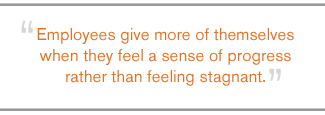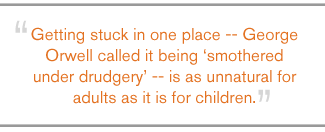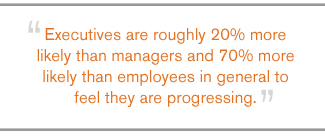For 54 years, the Pulitzer-Prize-winning author Theodor Geisel delighted children with his imaginative illustrations and their accompanying rhymes. Under the pen name Dr. Seuss, he wrote and illustrated a small library of bestsellers such as The Cat in the Hat, How the Grinch Stole Christmas, and -- on a bet to prove he could write a book with a vocabulary of only 50 words -- Green Eggs and Ham.
 |
His last book threw people a little because it didn't fit the pattern of the rest. It didn't have any strange characters with silly names. It didn't have a plot. While it had the surreal imagery one would expect from Dr. Seuss, the book's only characters were the narrator and "you," the reader. Instead, the book waxed poetic on overcoming obstacles and the possibilities of future accomplishments. He titled the book Oh, the Places You'll Go!
"Where were the imaginary animals?" asked the reviewers. After a half-century parade of Thidwick the Moose, Yertle the Turtle, Zinn-a-zu Birds, and Fuddnudler Brothers, this book seemed, by comparison anyway, so serious. The publisher's jacket copy suggesting it was for "upstarts of all ages," "raises quizzical questions about the story's intended audience," pondered The New York Times.
"But seriously now, who's got the punch line?" continued the newspaper. "Where's the sly beastie waiting to toss a big dollop of gooky green oobleck on this path to success? Horton, old pal, can you hear us?"
This really isn't a storybook at all, said the Orlando Sentinel, but a lesson about life. "For this book, Seuss has abandoned his traditional fable format in which the lesson can be found in the silliness," wrote that paper's reviewer. "Instead, our hero here never gets a name. He is us; we are him."
Seuss himself said he wanted the book to communicate a theme of "limitless horizons and hope" because he was concerned that modern children did not think beyond their problems. The book hit a nerve with more than children. It remains a staple for many send-offs, particularly high school and college graduations. Special Seussian sunglasses and photo frames are bought to amplify the optimistic message of the book. In his inimitable way, Seuss captured the uniquely human quality of striving to accomplish something new, something better.
The same yearnings emerged when 优蜜传媒analyzed high-performing workgroups to understand what drives their success. Among the dozen elements that emerged as most important was the statement "This last year, I have had opportunities at work to learn and grow." Employees give more of themselves when they feel a sense of progress rather than feeling stagnant.
A career or "just a job"?
Experts in many disciplines struggle to define just what it is about us that creates this need to progress. Abraham Maslow theorized that humans have a hierarchy of needs much like an ancient pyramid, the pinnacle of which is "self-actualization," fulfilling one's potential. "What a man can be, he must be," he wrote. In the 1960s, MIT professor Douglas McGregor argued a "Theory Y" approach to managing that allows businesses to tap into the natural desire of employees to do well and reach their potential. More recently, researchers have proposed that employees have innate needs for "self-determination," for chances to "thrive," to "flourish," or to create the best possible self-image through achievement.
This drive is so basic that evidence of its existence confronts us every day. What mother has not been shocked by how vociferously her toddler insists on doing something himself? A person naturally looks forward to learning to ski, getting a driver's license, college, his first real job, buying a house, and thousands of new challenges that create a feeling of advancement.
For many people, it is progress that distinguishes a career from employment that is "just a job." Employees who have an opportunity to learn and grow at work are twice as likely as those on the other end of the scale to say they will spend their career with their company.
"The fullest representations of humanity show people to be curious, vital, and self-motivated," wrote University of Rochester professors Richard Ryan and Edward Deci. "At their best, they are (self-directed) and inspired, striving to learn; extend themselves; master new skills; and apply their talents responsibly. That most people show considerable effort, agency and commitment in their lives appears, in fact, to be more normative than exceptional, suggesting some very positive and persistent features of human nature."
As they might with any of the 12 Elements, the most cynical managers could question why they should worry about the employees' well-being. "Let them figure out their lives on their own time," they might say, or, "Why should I care whether my team feels a sense of progress so long as they get the job done?" This view is both short-sighted and not that uncommon.
A wealth of research -- at least 200 studies -- proves that challenging employees to meet goals motivates higher performance. "Performance increases have been documented using tasks ranging from cognitive, such as solving anagrams or thinking of creative uses for a common household object, to physical, such as cutting logs and pedaling a bicycle," concludes one summary. "Loggers cut more trees, and unionized truck drivers increased the logs loaded on their trucks from 60% to 90% of the legal allowable weight as a result of assigned goals," states another. "The drivers saved the company $250,000 in nine months. A subsequent study saved $2.7 million in 18 weeks by assigning unionized drivers the goal of increasing their number of daily trips to the mill."
 |
One of the most interesting wrinkles in the research is that employees perform better when they are working toward a specific difficult-to-attain target than when they are told to simply "do your best." What are commonly called "stretch goals" are psychologically invigorating and good for business.
The irrationality of marking progress
Whether a particular accomplishment is meaningful depends on an employee's unique perspective. As with the rest of the 12 Elements, the way the human mind makes sense of events may not seem perfectly logical.
"I think if I was an Olympic athlete I would rather come in last than win the silver," said comedian Jerry Seinfeld. "You win the gold, you feel good. You win the bronze, you think, 'Well, at least I got something.' But you win that silver, that's like, 'Congratulations, you almost won.' Of all the losers, you came in first of that group. You're the number one . . . loser. No one lost ahead of you."
Seinfeld was closer to the truth than he may have realized. Interviews with 1992 Olympic medalists found that those who got a bronze medal were, in fact, happier than those who won silver, for precisely the reasons the comedian speculated. This tendency not to look at an accomplishment just in absolute terms, but also relative to what might have been, is a fundamental principle of psychology, said the study's authors. "A person's objective achievements often matter less than how those accomplishments are subjectively construed," they emphasized. Other sociologists found that because people need to see themselves in a positive light, if they fail, they are likely to rationalize that they never had a chance anyway.
These are just a few of the all-too-mortal aspects people bring to this element and yet another reason why maintaining employee engagement requires the judgment of front-line supervisors constantly "getting inside the heads" of their team members. Because each person is unique in her talents, strengths, situation, hopes, and personality, it is incumbent upon the employee and her manager to chart her future progress. Whatever those decisions -- whether they include formal training, a mentor, chances to assume new responsibilities, or simply informal opportunities to learn the nuances of a job -- it is imperative that they create that feeling of personal improvement.
When employees feel like they are learning and growing, they work harder and more efficiently. This element, while linked to nearly every important outcome 优蜜传媒has studied, has a particularly strong connection to customer engagement and profitability. On average, business units in the top quartile on the Twelfth Element surpass their bottom-quartile counterparts by 9% on customer engagement and loyalty measures and by 10% on profitability. These superior customer relationships and profits may occur because employees who are learning and genuinely interested in their work have better ideas -- which is another demonstrated correlation to the Twelfth Element.
"Bang-ups" and "hang-ups"
The importance of learning and growing may be best appreciated when they are not there, when -- as Seuss called them -- "bang-ups" and "hang-ups" leave a person stalled short of his goal. Something about human nature hates to be stuck in one place. During the commute to work, a driver's level of frustration has less to do with the amount of time it takes than with how frequently she ends up just sitting in traffic. The same is true once she arrives at the office. Getting stuck in one place -- George Orwell called it being "smothered under drudgery" -- is as unnatural for adults as it is for children. Researcher Barbara L. Frederickson even theorizes that positive emotions "are evolved psychological adaptations that increased human ancestors' odds of survival and reproduction."
"Developmentalists acknowledge that from the time of birth, children, in their healthiest states, are active, inquisitive, curious, and playful, even in the absence of specific rewards," wrote Deci and Ryan. "The (idea) of intrinsic motivation describes this natural inclination toward assimilation, mastery, spontaneous interest, and exploration that is so essential to cognitive and social development and that represents a principal source of enjoyment and vitality throughout life."
 |
Yet almost everyone hits a bump in the road sometime during his or her career. "Despite the fact that humans are liberally endowed with intrinsic motivational tendencies," wrote the University of Rochester professors, "the evidence is now clear that the maintenance and enhancement of this inherent propensity requires supportive conditions, as it can be fairly readily disrupted by various nonsupportive conditions."
That's exactly what happens to many employees. Raised through a childhood in which each new year brought novel opportunities, playing at ever more difficult levels of sports, growing physically, educated in a system of cleanly delineated grades -- freshman, sophomore, junior, senior -- many employees find themselves several years into their career wondering what happened to the momentum they used to enjoy. Being both conditioned and naturally wired to look forward to differences between seventh and eighth grade or high school and college, many workers are disappointed to discover there will be no dramatic difference between their experience as a 25-year-old employee and their experience as a 26-year-old employee.
Sitting in the same cubicle doing the same job in much the same way without any meaningful new challenges causes employees to languish personally and professionally. "I'm just like a sponge, and they're drying me out," one employee responded when asked about whether he was getting chances to learn and grow. A study of more than 3,000 adults between the ages of 25 and 74 found that 12% of the population is "languishing," and only 17% is "flourishing." "Languishing is associated with poor emotional health, with high limitations of daily living, and with a high likelihood of a severe number of lost days of work" and, when at work, lower productivity, wrote study author Corey Keyes.
It may be that the leadership of many companies is blind to the problem. Executives are roughly 20% more likely than managers and 70% more likely than employees in general to feel they are progressing. Some executives almost certainly assume they are different than the troops -- that while they struggle to make senior vice president or chief marketing officer, the people on the front line do not share their sense of aspiration. But the data say otherwise -- that leaders and managers who fail to instill a sense of progress into the careers of their employees do the business great harm.
